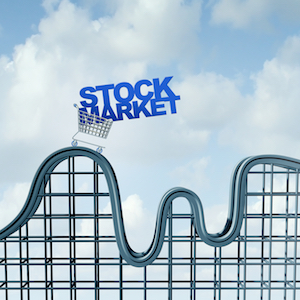 It was an up-and-down year for the markets, rewarding those who stood pat, but it appears that some 401(k) plan participants broke the cardinal rule about selling low and buying high.
It was an up-and-down year for the markets, rewarding those who stood pat, but it appears that some 401(k) plan participants broke the cardinal rule about selling low and buying high.
According to the Alight Solutions 401(k) Index: Full Year 2020 Observations, 401(k) investors in 2020 were busy traders out of equities as stocks were falling and slowly returned to them after their rebound.
Net transfers for the year as a percent of balance was 3.51%, the highest level since 2008. Overall, the year had 47 days of days of above-normal trading activity, with 26 of these days occurring during a six-week stretch from the end of February to early April when the world was coming to grips with the COVID-19 pandemic, Alight notes in its year-end wrap-up. (A “normal” level of relative transfer activity is when the net daily movement of participants’ balances as a percent of total 401(k) balances within the firm’s Index equals between 0.3 times and 1.5 times the average daily net activity of the preceding 12 months. A “high” relative transfer activity day is when the net daily movement exceeds two times the average daily net activity.)
“In some ways, there was a full market cycle in 2020,” says Rob Austin, head of research at Alight Solutions. “There was a steep drop in March followed by a sustained recovery throughout the remaining months of the year. Unfortunately, we saw many investors repeat the unfortunate trend of selling low and buying high that has been shown repeatedly throughout the more than 20-year history of the Alight Solutions 401(k) Index.”
Austin notes that the busiest days for trading were when the stocks were tumbling, and the trades overwhelmingly went from equities to fixed income. “It wasn’t until the end of the year—when the market was setting new record highs—that investors traded back into equities,” he says.
In fact, the firm’s data shows that 401(k) investors resumed trading into equities in the fourth quarter. Twenty days in the quarter saw net trading activity move money from fixed income to equities—much higher than the six days in the third quarter, Alight notes in its fourth quarter observations. Overall, net trading volume was light with 0.68% of balances traded (down from 0.92% in the third quarter).
Inflows and Outflows
Asset classes with the most trading inflows in 2020 were bond, stable value and money market funds, while the most trading outflows were from larges U.S. equity funds, target date funds and company stock. Bond funds reaped the highest percentage of inflows, at 44% for an index dollar value of $3.5 billion, while 39% went to stable value funds at slightly more than $3 billion and 13% went to money market funds at slightly more than $1 billion.
As for outflows in 2020, large U.S. equity funds registered the highest, at 38% for an index dollar value of just under $3 billion, followed by target date funds at 27% (or $2.1 billion) and company stock at 10% (or $782 million).
Contributions
Target date funds made up the lion’s share of contributions in 2020, receiving 46% for an index value of $7 billion, followed by large U.S. equity funds at 20% (or $3.1 billion) and international funds at 7% (or slightly more than $1 billion).
After reflecting contributions, trades and market activity, 401(k) investors ended 2020 with 67.7% in equities, down slightly from 68.1% at the beginning of the year, Alight’s year-end index shows.
And in what was hard to imagine back to March and April, the returns of the major market indices for the year ending Dec. 31, 2020 all registered in positive territory, with nearly all receiving double-digit gains:
- Russell 2000 Index: 20%
- S&P 500 Index: 18.4%
- MSCI All Country World ex-U.S. Index (net): 10.7%
- Bloomberg Barclays U.S. Aggregate Index: 7.5%

